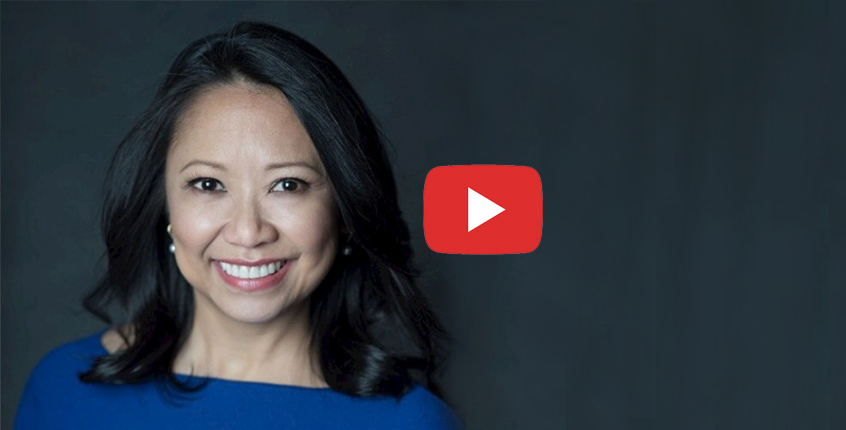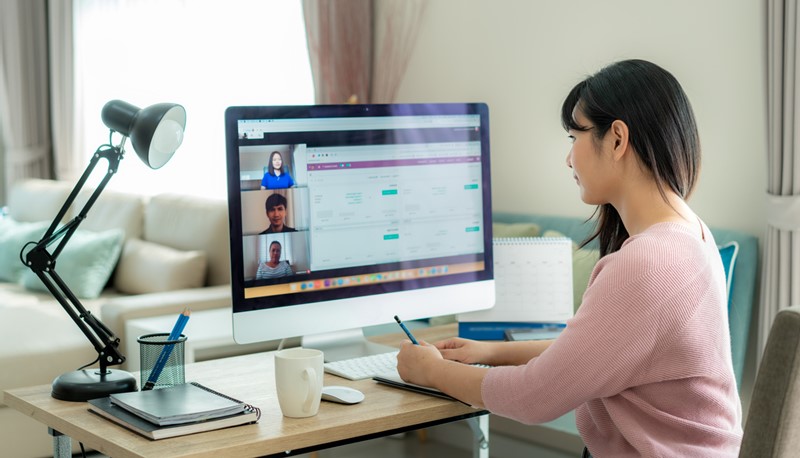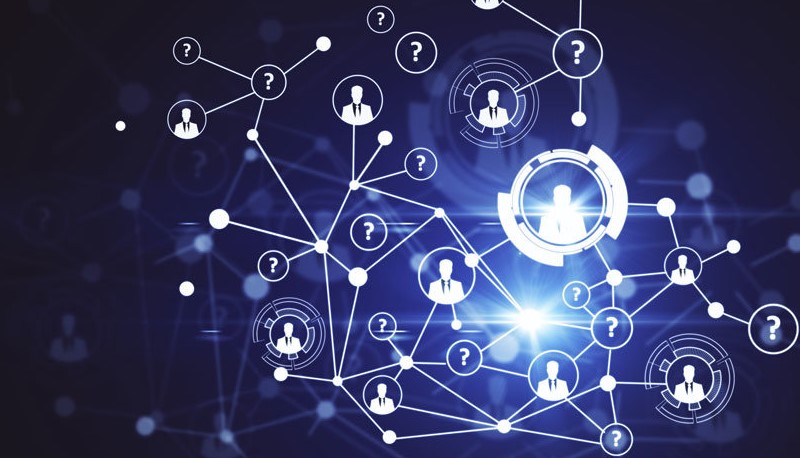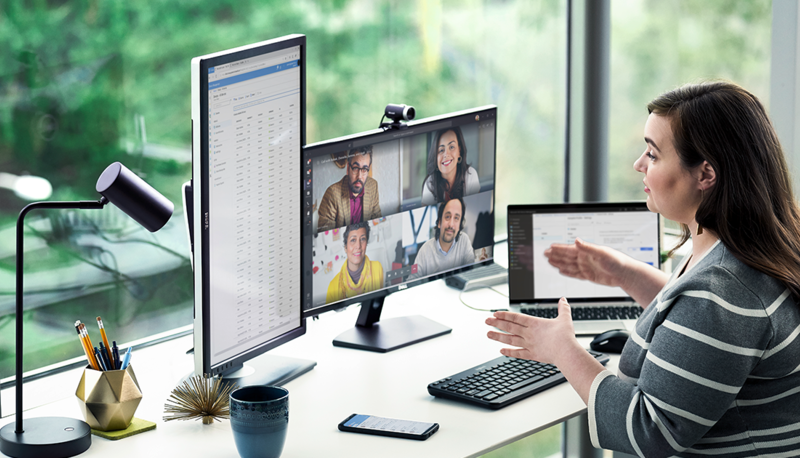2020 was a bumpy ride for talent leaders. No one had the playbook for this. As the HRs became frontliners to the corporate world, they had to answer old problems from new perspectives – from how to make new remote hires and drive positive employee experience to being effective remote leaders and ensuring fluid communications. Kate Talty, GTML™ and Americas Leader, Total Rewards, Mobility, and Analytics at Lixil, talks to TMI about her experience and future of work trends post COVID-19. “Be upfront about your expectations and communication preferences when employees are remote,” she says. Watch the full interview.

Welcome, everybody, to talent management institute's "2020 in Review". Today we're speaking with Kate Talty, Americas Leader, Total Rewards and Mobility, and Analytics – LIXIL. Kate, thank you so much for taking the time with us today.
Kate: Thanks for having me!
As a senior leader, what have been your biggest challenges in working from home or working remotely this year?
Kate: Working remotely actually works for me, and I enjoy the flexibility. I also lead a team across the region, so we're all in different time zones anyway. We've been using Zoom even before COVID, so it hasn't been much of a challenge. Where it did pose a challenge with me was when I hired two new members of the Total Rewards team this year - one in Mexico and another here in the US. So, working remotely definitely has posed a challenge in terms of creating or building that work relationship. It's not as easy to connect with somebody remotely; it's really just different. I feel like it somewhat hampers the progress of building a relationship with a new employee, and onboarding itself is difficult not only for me but for the new hire because they can't just go to my office and ask questions. We now always have to work with a schedule in order to connect. This is the only part of working remotely that has been a challenge for me this year.
In your experience, what are key factors in motivating a workforce during a pandemic?
Kate: There are a couple of things—the first is something that we've been doing year round, which is communications. We have been, as an organization, doing a good job on communications with our leaders communicating constantly with our employees. But since COVID broke out, those communications have become more prolific. It wasn't just communications from top down, but communications between employees. At LIXIL, we use Workplace which is basically Facebook for the workplace. We have employees connecting with other employees and leaders connecting with everybody around the world. For example, at LIXIL, we happen to have a pet-loving culture, so we have a Workplace page where everybody posts something about their pets, whether it's about their puppies, cats, or birds. It has been a really fun avenue to connect. So, definitely, communications have been key in terms of the challenges brought on by working remotely.
Another factor that’s important in motivating and engaging employees is that we continue to recognize and reward employees for doing a really good job. This year really challenged us to do things that we haven't done before, because we're dealing with something so unexpected and unprecedented. We have to acknowledge and recognize the work that everybody has done or is doing, to continue to adapt to this this strange new world that we're in. For that, communications and rewards and recognition are two key factors in maintaining and motivating our employees.
Let’s expand on the communication bit a little bit, because recent surveys have found communications from employers are more trusted than government communications, media communications, or even those from other businesses. As you are saying, it's not just top-down communications that are so important – it's all communication. What role do you think HR has to play in ensuring these effective communications across the business in a world where lines between work and personal life are so blurred?
Kate: As HR professionals, we have the opportunity to affect change because of our roles and where we are in the organization. We have access to our employees and we also have access to our leadership. So, in order to support that blurred line between personal life and work, we need to put out constant reminders and communications to our employees and leaders to respect everybody's boundaries; employees should have a say about their boundaries. For HR, it is about setting expectations and being transparent about those expectations with leaders, direct supervisors, even people in our plants. HR’s role is to constantly remind everybody – all the stakeholders – about these boundaries and to encourage respect. Respect happens to be one of our major values in LIXIL, and we always remember to treat each other with respect.
You talked a little bit about your experience in working remotely even prior to the pandemic, but so many companies have never dealt with a largely remote workforce before this year. From speaking to those organizations, what do you think are some key factors for these organizations in managing a newly remote workforce?
Kate: Everybody now is working remotely, and I really feel that organizations all over the world showed their resilience and adaptability when COVID hit in March. A lot of organizations switched to working remotely; it's December now, and we're still productive, right? I’ve hardly heard of organizations reporting that their employees are less productive or that their operations slowed down. Some operations may have slowed down because it was necessary. (At LIXIL Americas), some plants had to shut down temporarily because we wanted to ensure that our employees were safe, so we did what we needed to do. We had to make some difficult decisions as well to maintain that balance between understanding our employees’ needs as well as our business’ needs to continue operations.
When it comes to managing a remote workforce, prior to COVID, a lot of organizations had flexible work arrangement policies. Currently, we are revisiting our policy to make sure that it's adaptable even after the pandemic is over; we want to consider what remote work is going to look like, how we as an organization are going to make that work for everybody, and how can we do it differently and make it more of a permanent work setup rather than just a temporary setup. We've still been productive; the only challenge is with the personal connection and being able to meet somebody right away, not just to talk about work but to talk about anything, that is, to simply connect with somebody. This is the key aspect that’s missing right now. Other than that, remote working will be here to stay.
In terms of total rewards and mobility, what are you doing now that you weren't doing this time last year, and what have some of these big changes been?
Kate: Prior to COVID, our focus was on employee experience and understanding the future of work. But COVID broke out, and by the end of March-April, the future of work suddenly got here! We’re still focused on employee experience; however, we've shifted our focus to becoming a more agile organization. What that means is we want to be able to constantly anticipate what's changing or what’s going on out there, so that we can prepare for any changes that may impact organizations and employees and then prepare for how we're going to respond to those changes. We’ve also increased our wellness offerings from a total rewards perspective. We have been offering a lot of wellness programs, but this year, we've intensified that because of the situation that we're all in. We’ve focused heavily on mental wellness, physical wellness - making sure that everybody's still taking care of themselves - as well as financial wellness because the pandemic's impact on the economy is something that we all have to be aware of and something we should all be prepared for. We're also providing our employees a lot of resources they can tap into so that they know where to go for advice. A lot of organizations have the EAP program, and that's something we advertise over and over again. It’s about making sure that our employees have access to all of these resources so that they are able to still take care of themselves as well as to focus on their overall wellness. Again, communication is very important, that is, constant communication with employees-especially when personal interaction is absent. Thanks to technology that we're able to do this, so let's take advantage of that. So far, we've been successful in terms of promoting employee engagement through constant communication and constantly looking for ways to adapt to the changing work landscape. I’ve also seen an uptick in collaboration. Because we're so far away from each other now you just schedule Zoom and you're immediately with your team or you're talking to all the stakeholders. Remote working has brought up opportunities as well.
Well said – “Come March, the future of work was here”! And now we're middle of December, right in the middle of the holiday season of what has been a crazy year. Do you feel that HR and organizations are still in crisis response mode, or has it stabilized more?
Kate: I don't think we are in crisis mode anymore, at least not to the same extent as where we were in March-April-May. I don't think things have stabilized either, and I don't think it will ever stabilize. As HR professionals, we have to constantly understand and be aware of what's going on, so we can better anticipate and plan our response to change. I remember what my dad always taught me in terms of driving – to expect the unexpected. There are also other external issues in the U.S. such as diversity, the election, and how all of that is impacting the economy. As HR professionals, we have to expect the unexpected. We now have to constantly anticipate change so that we can better respond to all of these changes. COVID I think is a learning experience for all of us. My hope is that we don't wait for another pandemic to assess current state or hit the reset button. This is actually the perfect time of the year - the end of the year - to look back and reflect on what we were doing, what we did, what went well and what didn't go so well. So, going forward, we can plan on how we do things differently and better. We’re not in crisis mode anymore, and we seem to be moving towards a better direction at the end of this year (at least I’d like to think that). However, I don't think things will stabilize either because change is here to stay.
Absolutely. Our final question – you mentioned taking this opportunity to look back and see what we've learned. For you personally, what has been your biggest learning in 2020?
Kate: : I have a couple of learnings. With the future of work being here, it has validated for me - and for a lot of people who didn't realize this before the pandemic - how essential our work is in HR. Since COVID broke out, HR has been thrust to the forefront. We became the front-liners to the corporate world. For example, I found myself in March doing some research on the states that we operate in, in terms of their benefits for unemployment or for anything that we can tap into, so that we could develop an emergency leave policy. It was so unprecedented that we had to really figure out what we needed to do from scratch. As HR professionals, our work is so essential in terms of how we're always thinking about the business and how we continue (to run) the business, and at the same time we have to balance that with understanding our employees’ needs, that is, how we attract or motivate them. We are doing both at the same time because, at the end of the day, we have to deliver, right? HR is not an easy job, for people out there who think so. It's not just about helping people; it's about helping people while helping to run our business. One thing's for certain – change is here to stay, and HR really needs to be adaptable and resilient and understand the changing work landscape brought on by a lot of factors such as technology, changing demographics, generation of workers, diverse population, the political climate and the economy. We have to think about all these factors and understand how they’re impacting organizations.
The other learning I have for 2020, which I hope will be here to stay -- and I’m fortunate to be in an organization that promotes respect -- is that I’ve seen an uptick in kindness in the workplace. Kindness, compassion, and empathy are words that I’ve heard of a lot this year, which as one would think should have been here a while back. It's something that we're taught at home as well. I think the pandemic magnified the importance of kindness in the workplace. There are studies that have been done that prove kindness is contagious and that kindness motivates employees or makes employees happier, and with happier employees we have increased productivity, which in turn, increases revenue and market share. The way our employees are reflects how they treat customers. Happy customers: that’s what businesses would want to have, right? I think kindness should be here to stay – that is my vote, at least. At the end of the day, it comes down to your legacy: what you want to be remembered for.
Kindness certainly has our vote as well, and we hope that is here to stay. In 2020 it's been something everybody needs a bit more of, but in the future as well, everyone can deal with more of that on a regular basis.
Kate: Absolutely!
Well Kate, thank you so much for taking the time with us today. We certainly appreciate it! Safe and well wishes to you and yours in this holiday season.
Kate: Same to you!













CredBadge™ is a proprietary, secure, digital badging platform that provides for seamless authentication and verification of credentials across digital media worldwide.
CredBadge™ powered credentials ensure that professionals can showcase and verify their qualifications and credentials across all digital platforms, and at any time, across the planet.

Please enter the License Number/Unique Credential Code of the certificant. Results will be displayed if the person holds an active credential from TMI.